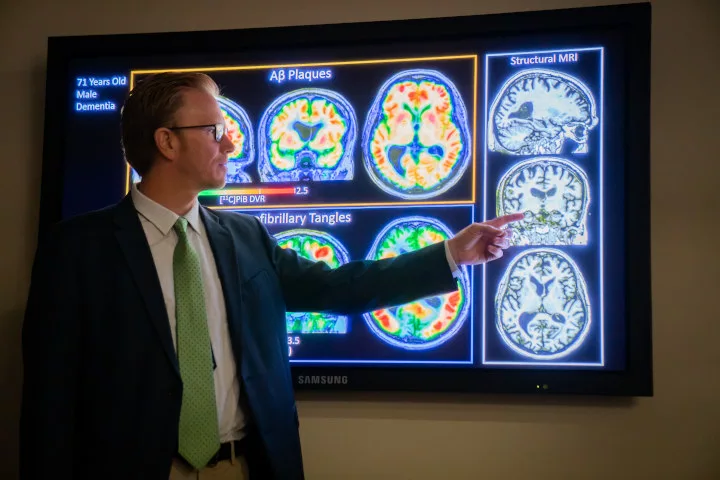Wisconsin Registry for Alzheimer’s Prevention marks 20th anniversary
November marks a significant scientific milestone for the Wisconsin Registry for Alzheimer’s Prevention (WRAP) study at the University of Wisconsin School of Medicine and Public Health. It is the 20th anniversary of a groundbreaking study that is advancing the field of Alzheimer’s research here in Wisconsin and internationally.
The study began with one participant in Nov. 2001 in Madison, Wisconsin. Twenty years later, with more than 1,700 research participants and two decades of data collection, it has become the largest family history study of Alzheimer’s disease in the world.
The study follows participants, 70% with a family history of Alzheimer’s disease, over time to learn about biological, health and lifestyle factors that might influence the disease. Every two years, participants come in for memory testing, blood draws, interviews and a subgroup undergo brain imaging and spinal fluid tests to help researchers develop a comprehensive data set that includes cognition, lifestyle, molecules (biomarkers) associated with Alzheimer’s disease, genetic analysis and metabolism information. These regular touchpoints are important because they can help researchers understand patterns that might be related to disease development or prevention long before symptoms are apparent.
The longer a person participates in the study, the more researchers can learn about changes that may happen in the brain and how they relate to cognitive function over time, according to Sterling Johnson, PhD, WRAP principal investigator and professor of medicine (geriatrics) at the UW School of Medicine and Public Health.
“Our participants and our researchers are a team. We are enabling real progress toward a future of delaying, preventing and ending Alzheimer’s disease,” Johnson said. “In its 20th year, WRAP is embarking on new discoveries that shape how scientists and clinicians across the world think about Alzheimer’s disease.”

Over the past two decades, study data contributed to key insights about Alzheimer’s disease such as new ways to detect subtle cognitive change, the length of time between when symptoms emerge and when the disease is detectable in the brain, and the impact of a healthy lifestyle on slowing cognitive decline. In the future, researchers hope to be able to detect signs of the disease in blood samples that have been archived in the freezer, in some cases for almost two decades.
Twenty years ago, science lacked the technology to study Alzheimer’s disease brain changes in living research participants, but today, advanced medical imaging techniques and analysis of disease-associated compounds in cerebrospinal fluid allow researchers to identify early brain changes potentially associated with Alzheimer’s disease. Blood-based biomarker screening is an especially important new frontier that will be part of the future of WRAP.